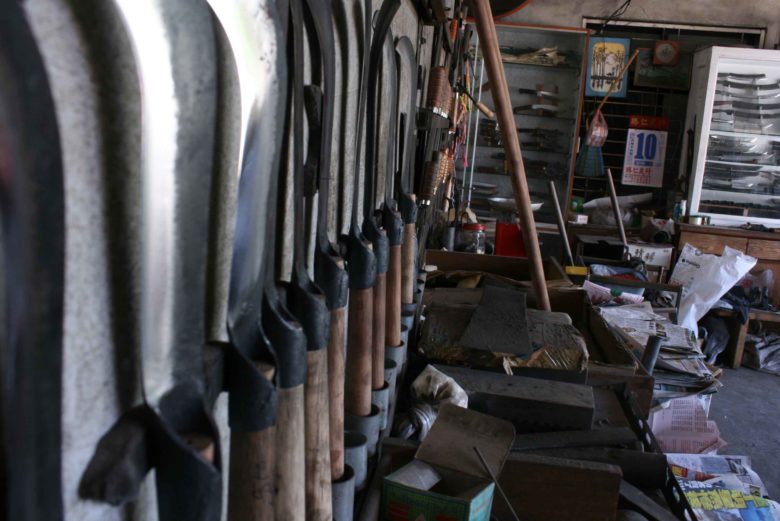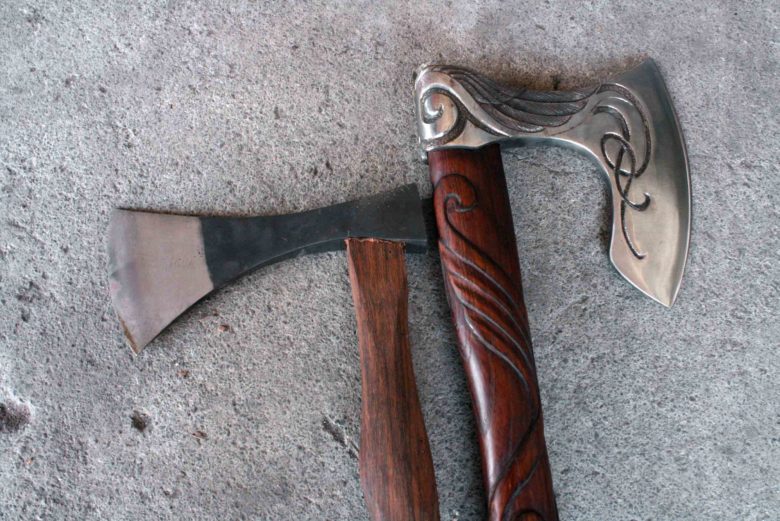Quenched a knife and fire, the new life of Jifeng Iron Store
0 sharing


There are irons for trees in the mountains and irons for farming in the plains. Although they are all called irons, they are different fields. Qishan is located at the junction of the mountain and the plain, where it creates the intersection of industries, where there are not only immigrants, but also ethnic groups who have deeply reclaimed land. Jifeng Tiedian is the field where the ancestors who opened the mountain and opened up the earth are in this intersecting field. it also continues to play the call of inheriting and pioneering spirit and tempering action.
[the iron-striking youth returned to his hometown 20 years ago]
"when iron is hot, you bully it, and when iron is not red, it bullies you." Ironmaking brings out the philosophy of life. Twenty years ago, Lin Hsiang-hsiang, a young man who returned to his hometown, inherited the good skill of ironing at home and studied the experience of different ironmaking products. In the store, we can see a dazzling variety of knives, from aboriginal mountain knives, Southeast Asian machetes, Damascus steel knives, axes, machetes, head knives, and so on, to be a craft collection shop. "the Nanzou people of the aborigines were founded as the La'aruwa people, and I carefully built the letter knife that was given to the former Democratic Committee to pull out the road." Constantly studying the iron products and traditional products that keep pace with the times, Master Lin proudly said that Jifeng Iron Store is an example of production transformation.


The axe is the signature farm tool in the store.
Lin Heng-hsien has been exposed to iron since junior high school, because his father, Lin Jiguang, the founder of Jifeng Iron Store, let his children shuttle and explore in the iron shop from an early age. He also cultivated his children's interest in the industry and inherited the ironmaking skills in the future. After entering the industry, Master Lin studied the knife pieces of Southeast Asia, aborigines, and Han Chinese, and found that Southeast Asia had the best knife shape and power point, not only the center of gravity forward, but also the quality was sticky, and the force on the knife bone was average, so he began mass production and was loved by local firewood-chopping farmers. "the knife of the Bunun nationality is relatively small, the head of the Nanzou is big, the belly is small, and the northern Zou is small, like a pig knife." Master Lin is very knowledgeable about the study of different knife pieces. through the discussion of knife parts, we can vaguely see the life style and thinking of each nation.
[reclaimed Mountain Forest Iron Store with axe as the main attack]
- Prev

Fruit tree adoption action quite farmers amuse array!
Fruit tree adoption action quite farmers amuse array!
- Next

"2020 Xuejia Wheat Industry Culture Festival" takes the stage to create a low-carbon home.
Tainan City Environmental Protection Bureau will launch a resource recovery creative promotion booth in Guanghuali wheat field, Xuejia District, from 09:00 to 02:00 on Saturday, March 14, in cooperation with the Xuejia District Farmers' Association.
Related
- A course of planting techniques and methods on how to grow carrots
- How to plant the latest tulips?
- Is it better to pick tea in the morning or in the afternoon? When is the best time for tea to be picked? what is the third or fifth tea?
- Launch Yuanxiao Happy combination Haocha + Tea Yuan healthy Taste
- Penghu Tourism "Fireworks 20 Parade with You"
- 2022 West Lake Happiness holds "Digital Revitalization Voucher" and draws iphone13 and laptop.
- Banqiao Fuzhou social houses are designed to change start-up combined with police elimination to create a safe and livable environment
- The convenient measure of "mechanical weeding" in Xinbei has been abused and the Agriculture Bureau has imposed heavy penalties on the illegal land consolidation.
- Changgeng University Joins Hands with Four Memory Factories to Rescue Memory Talent Shortage
- The list of Taiwan's top 100 MVP managers is listed by the Director-General of the Farmers' Association of Sanxia District.

